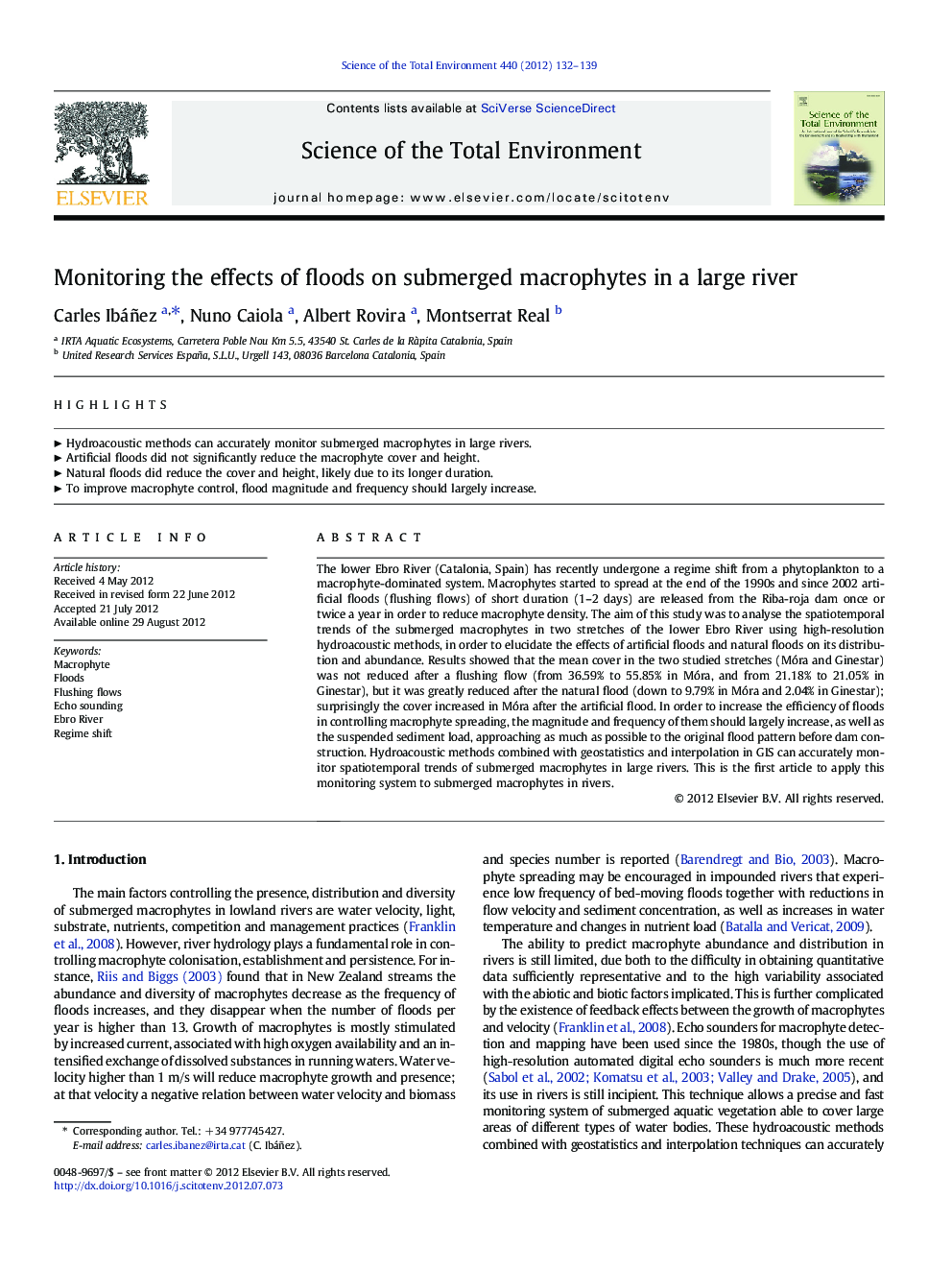| Article ID | Journal | Published Year | Pages | File Type |
|---|---|---|---|---|
| 4429118 | Science of The Total Environment | 2012 | 8 Pages |
The lower Ebro River (Catalonia, Spain) has recently undergone a regime shift from a phytoplankton to a macrophyte-dominated system. Macrophytes started to spread at the end of the 1990s and since 2002 artificial floods (flushing flows) of short duration (1–2 days) are released from the Riba-roja dam once or twice a year in order to reduce macrophyte density. The aim of this study was to analyse the spatiotemporal trends of the submerged macrophytes in two stretches of the lower Ebro River using high-resolution hydroacoustic methods, in order to elucidate the effects of artificial floods and natural floods on its distribution and abundance. Results showed that the mean cover in the two studied stretches (Móra and Ginestar) was not reduced after a flushing flow (from 36.59% to 55.85% in Móra, and from 21.18% to 21.05% in Ginestar), but it was greatly reduced after the natural flood (down to 9.79% in Móra and 2.04% in Ginestar); surprisingly the cover increased in Móra after the artificial flood. In order to increase the efficiency of floods in controlling macrophyte spreading, the magnitude and frequency of them should largely increase, as well as the suspended sediment load, approaching as much as possible to the original flood pattern before dam construction. Hydroacoustic methods combined with geostatistics and interpolation in GIS can accurately monitor spatiotemporal trends of submerged macrophytes in large rivers. This is the first article to apply this monitoring system to submerged macrophytes in rivers.
► Hydroacoustic methods can accurately monitor submerged macrophytes in large rivers. ► Artificial floods did not significantly reduce the macrophyte cover and height. ► Natural floods did reduce the cover and height, likely due to its longer duration. ► To improve macrophyte control, flood magnitude and frequency should largely increase.
